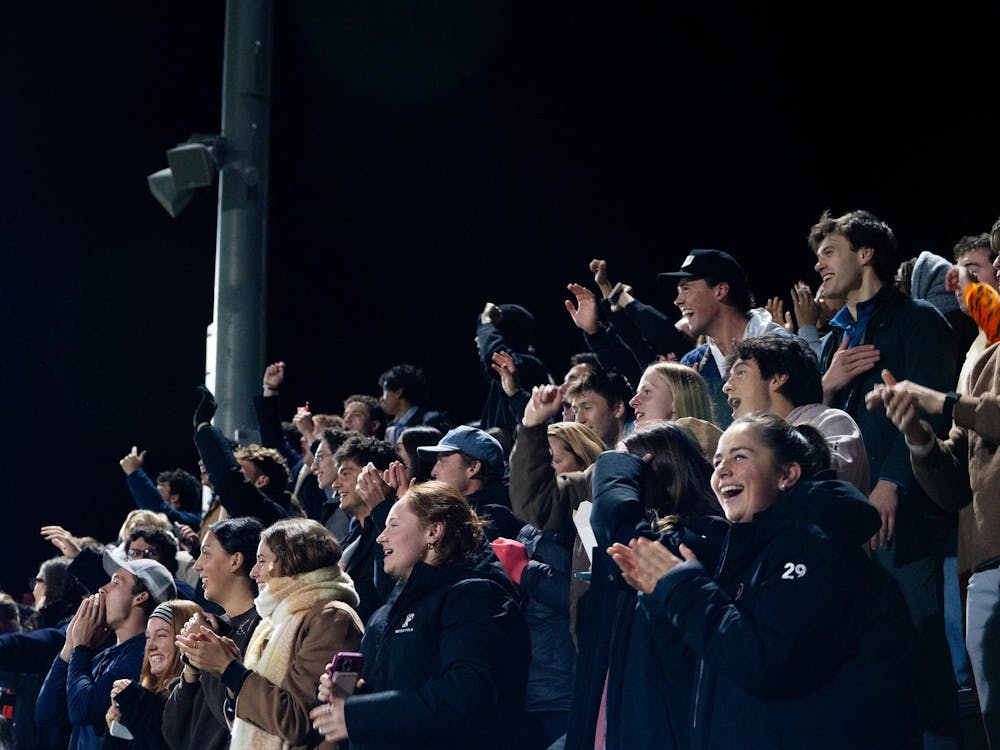Most sports fans spent their summer tracking their favorite baseball teams and the Michael Vick scandal. I lived in isolation in the mountains, preoccupied with a less conventional sport: whitewater kayaking.
Whitewater kayaking can't be done just anywhere. It requires certain equipment not available in your backyard or local sports store.
First of all, you need a river with rapids. I grew up in Mississippi, where we certainly have rivers, but only half a mountain, which we share with Alabama. Unfortunately, mountains are necessary to create "raging" rapids, though — without the rage, there's none of the thrill.
Secondly, you need time and endurance. Between traveling to the river, boating downstream and "playing" at fun rapids along the way, you normally spend an afternoon to a full day on the water.
Also, you can't easily stop if you're tired or afraid. Once you get on the water, you usually find yourself in the middle of a gorge with mountain walls or woods enveloping you on either side. Though you can find a riverside spot to rest, you don't often have the option of quitting. Running the rest of the river is usually your only way out. Once you're going downriver, you're committed until the takeout.
Like any sport, you need the right gear. You must have a boat, a spray skirt (to keep the water out of your boat), a double-bladed paddle and a helmet. You also need another person to boat with, for safety's sake.
Despite these restrictions ? or perhaps because of them ? I fell in love. Just like young boys become addicted to the feel of a football's laces between their fingers, I was captivated by the feel of water in my face and a paddle in my hand. But kayaking was only possible for me in the summer months I spent at camp.
So, this summer, I returned to the mountains of western North Carolina where I learned to kayak five years ago. This time around, I worked as a counselor at Camp Green Cove for girls.
As a paddling counselor, I spent my days at the lake teaching girls how to canoe and kayak. Girls begin by building their skills in a canoe, while the more dedicated campers continue to learn how to manage themselves in a kayak.
The girls first learn how to "wet exit" out of their upside down kayak. After they become comfortable with being underwater, we teach them how to control their boat by leaning to tilt the boat and using their paddle.
By this point, the girls are anxious to learn how to roll. "Rolling" involves flipping over in the boat and using one's hips and paddle to flip back up. Mastery of this skill means kayakers can flip over in the river and right themselves without exiting the boat. Once girls prove themselves comfortable in water and proficient in rolling, we can take them on progressively more challenging river trips.
Of course, all that training doesn't entail readiness to take on any river. But unlike in most sports, kayakers have second chances if they mess up. In a soccer game, a missed shot is a lost opportunity that won't come back. In kayaking, a wet exit in the middle of a rapid simply means carrying the boat up and doing it again.

I found over the course of the summer that kayaking builds confidence and a sense of adventure that spills over into daily life. No boating experience is the same as the next, even on the same river. Though what's coming around the bend is always unknown, confidence comes from the ability to control oneself on the water and deal with whatever comes.
Knowing how to do something uncommon and unusual gives these girls a secret pride to carry around during the school year. This self-assurance creates a sense of independence that will help them conquer fear ? something we forced them to face.
At the end of this summer, over 30 teenagers and 12 counselors tested their confidence on one last trip down the Nantahala River.
The Nantahala was not the most difficult river we paddled, but this was an unusually large group of girls, and many of them were challenging themselves in new types of boats. Experienced canoeists were trying out kayaking, and other new boaters were facing the biggest whitewater they'd seen yet.
It was a day for experimentation. Girls tried to push their skills, strengthen their rolls and learn new tricks. Most of the river is pretty low-key, and it gave the girls a chance to test themselves.
Finally, we reached the last rapid: Nantahala Falls, a Class III rapid. That made it the most intimidating whitewater that many of these girls had ever seen, let alone paddled through. The counselors kayaked down first to set up rescue boats and throwropes at the bottom to assist girls who might "swim" (what happens when rolling and wet-exiting aren't possible.)
There were a lot of swimmers. While several girls made it down the rapid upright, or rolled up at the end, others did not. We threw countless ropes and made many rescues. I was ready to see some frustrated faces by sunset.
Surprisingly, I saw only smiles. Some girls were cold or a little mad at themselves, but they all seemed to focus on how much fun they had. They had just done something new and unique.
As we loaded the boats to return to camp, the girls looked at each other with secret smiles that seemed to say, "People at home will never understand."







